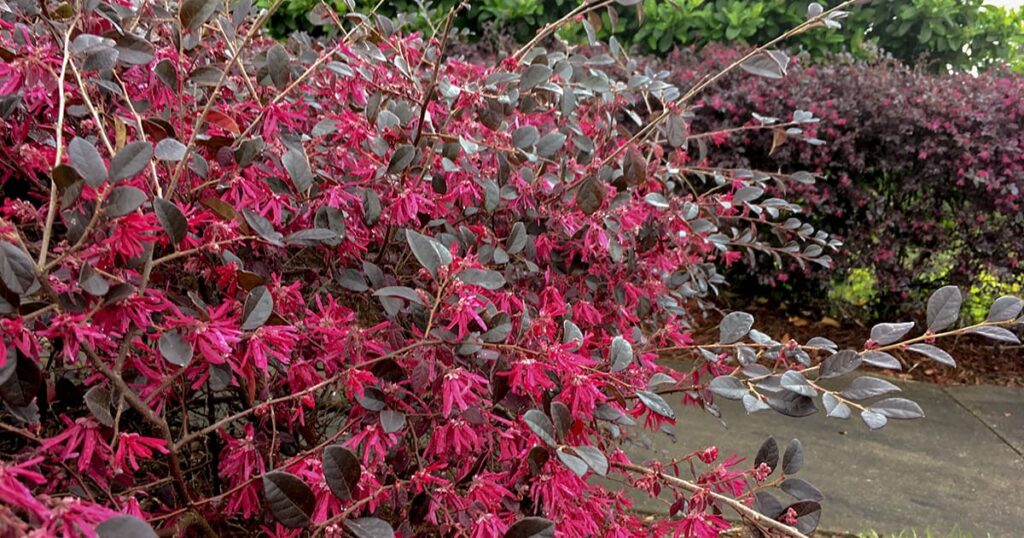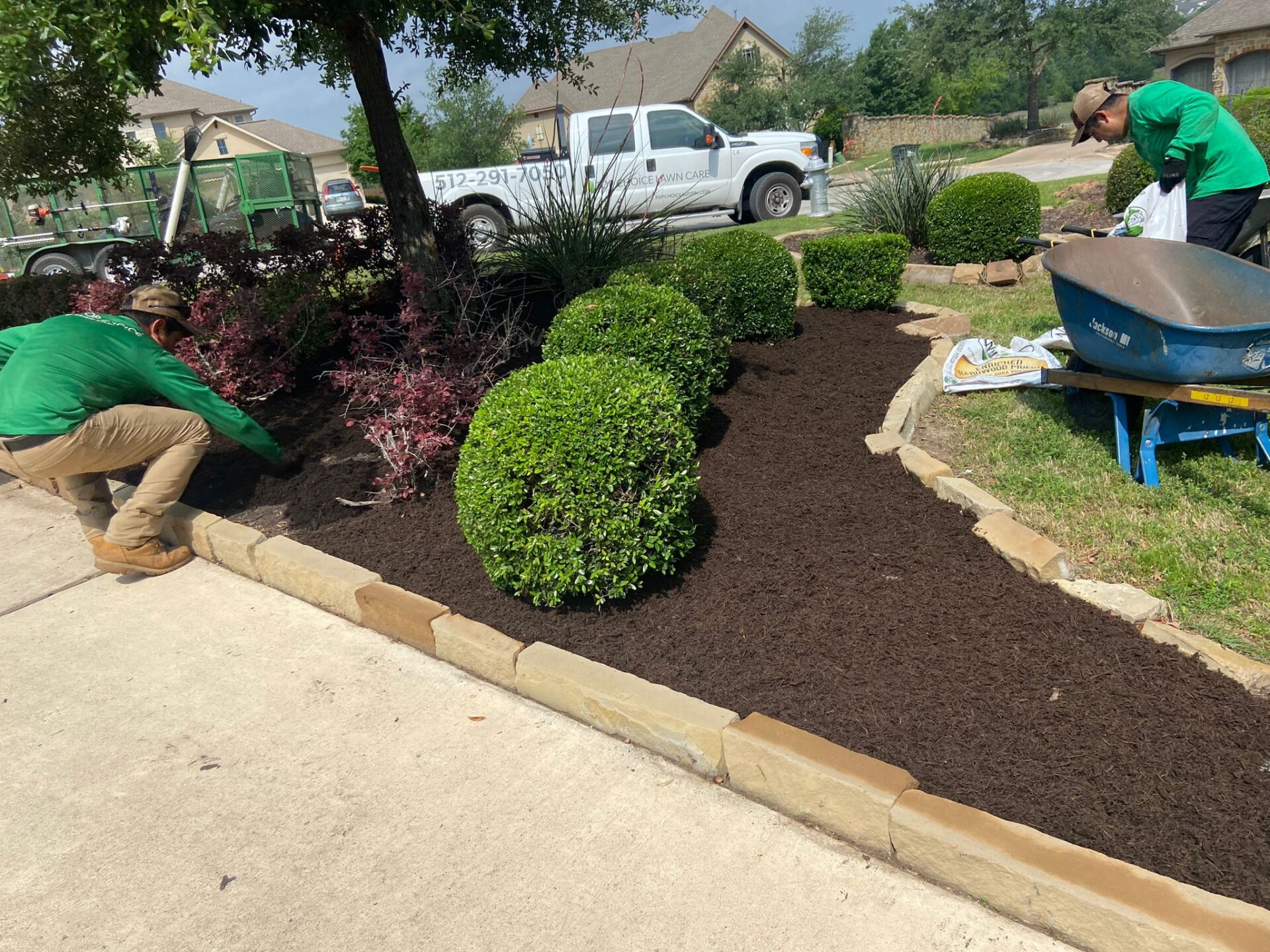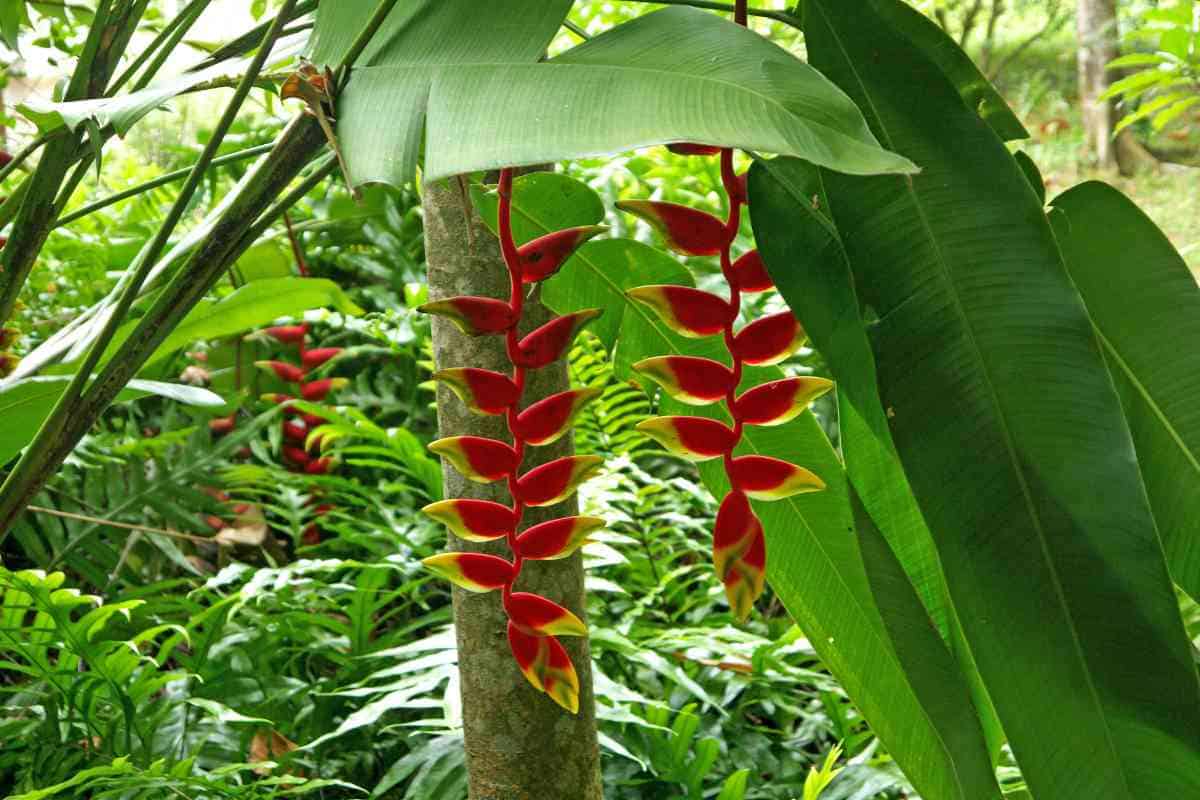
Unlocking the Secrets to Thriving Perennial Shrubs: A Comprehensive Guide to Care and Pruning
Perennial shrubs are the unsung heroes of the garden. They offer year-round beauty, structure, and a welcome haven for wildlife. Unlike their annual cousins, these steadfast plants return season after season, providing a consistent and reliable presence in your landscape. But to truly unlock their potential and enjoy their full splendor, understanding the nuances of perennial shrub care and pruning is essential. This comprehensive guide will delve deep into the world of these resilient plants, equipping you with the knowledge and techniques to cultivate a thriving and vibrant garden.
Why Choose Perennial Shrubs? The Enduring Appeal
Before we dive into the specifics of care and pruning, let’s explore the compelling reasons why perennial shrubs are a fantastic choice for any gardener. They offer a multitude of benefits that extend far beyond their aesthetic appeal.
- Longevity: As the name suggests, perennial shrubs live for multiple years. This means you invest in them once and enjoy their beauty for years to come, saving you time and money on replanting.
- Low Maintenance (Relatively Speaking): Once established, perennial shrubs are generally quite low-maintenance. They require less frequent watering, fertilizing, and overall attention compared to annuals.
- Structural Element: Shrubs provide essential structure to your garden, offering a framework that anchors other plants and creates a sense of order. They can be used as hedges, borders, focal points, or simply to add depth and dimension.
- Wildlife Habitat: Many perennial shrubs provide food and shelter for birds, butterflies, and other beneficial insects, contributing to a thriving ecosystem in your garden.
- Variety and Versatility: The world of perennial shrubs is incredibly diverse, with options to suit every climate, soil type, and aesthetic preference. From compact varieties to towering specimens, there’s a shrub for every garden.
- Reduced Soil Erosion: The deep root systems of shrubs help to stabilize the soil, preventing erosion and runoff, especially on slopes.
Understanding the Basics: Essential Perennial Shrub Care
Successfully growing perennial shrubs starts with understanding their fundamental needs. Providing the right environment and consistent care will set the stage for healthy growth and abundant blooms.
Choosing the Right Shrub for Your Garden
The first and arguably most crucial step is selecting the right shrub for your specific location. Consider the following factors:
- Climate: Research the hardiness zone of your area and choose shrubs that are well-suited to your local climate. This will ensure they can withstand the winter cold and summer heat.
- Sunlight: Determine how much sunlight your chosen location receives. Some shrubs thrive in full sun (6+ hours of direct sunlight), while others prefer partial shade (4-6 hours) or full shade (less than 4 hours).
- Soil Type: Assess your soil’s composition (sandy, loamy, clay) and drainage. Some shrubs prefer well-drained soil, while others tolerate wetter conditions. Conduct a soil test to determine its pH and nutrient levels.
- Space: Consider the mature size of the shrub and ensure you have enough space for it to grow without overcrowding other plants or structures.
- Aesthetic Preferences: Choose shrubs that complement your existing landscape and reflect your personal style. Consider their foliage color, flower color, form, and texture.
Planting Your Perennial Shrubs
Once you’ve selected the perfect shrub, proper planting is essential for its long-term health. Follow these steps:
- Prepare the Soil: Amend the planting area with compost or other organic matter to improve drainage and fertility.
- Dig the Hole: Dig a hole that is twice as wide as the root ball and just as deep.
- Remove the Shrub from its Container: Gently loosen the roots from the container and tease apart any circling roots.
- Position the Shrub: Place the shrub in the hole, ensuring the top of the root ball is level with the surrounding soil.
- Backfill the Hole: Fill the hole with the amended soil, gently tamping it down to remove air pockets.
- Water Thoroughly: Water the newly planted shrub deeply to help settle the soil and encourage root growth.
- Mulch: Apply a layer of organic mulch (such as wood chips or shredded bark) around the base of the shrub, keeping it a few inches away from the stem. This helps retain moisture, suppress weeds, and regulate soil temperature.
Watering
Watering is crucial, especially during the first year after planting. Water deeply and regularly, especially during dry periods. The frequency of watering will depend on the specific shrub, the climate, and the soil type. Generally, water when the top inch or two of soil feels dry to the touch. Avoid overwatering, which can lead to root rot. Consider using a soaker hose or drip irrigation system to provide slow, deep watering.
Fertilizing
Fertilizing requirements vary depending on the shrub species and the soil conditions. In general, a balanced fertilizer (such as 10-10-10) can be applied in early spring to promote growth and flowering. Follow the manufacturer’s instructions carefully, as over-fertilizing can damage the shrub. Consider conducting a soil test to determine the specific nutrient needs of your soil.
Mulching
Mulching is a simple yet effective way to improve the health of your perennial shrubs. It helps retain moisture, suppress weeds, regulate soil temperature, and improve soil fertility. Apply a 2-4 inch layer of organic mulch around the base of the shrub, keeping it a few inches away from the stem to prevent rot. Replenish the mulch as needed, typically once or twice a year.
Pest and Disease Management
While perennial shrubs are generally quite resilient, they can still be susceptible to pests and diseases. Regular monitoring is key to catching problems early. Inspect your shrubs for signs of infestation or disease, such as:
- Discolored foliage: Yellowing, browning, or spotting of leaves can indicate a problem.
- Unusual growths: Galls, cankers, or other unusual growths can be a sign of disease.
- Chewed leaves or stems: This indicates the presence of pests.
- Webbing: Spider mites often leave behind fine webbing.
If you notice any problems, take action promptly. Identify the pest or disease and choose an appropriate treatment method. This may involve:
- Pruning: Remove and dispose of any affected plant parts.
- Insecticidal soap or horticultural oil: These can be effective against many pests.
- Fungicides: Use fungicides to control fungal diseases.
- Beneficial insects: Introduce beneficial insects, such as ladybugs, to control pests.
- Proper watering and fertilizing: Healthy shrubs are more resistant to pests and diseases.
The Art and Science of Pruning Perennial Shrubs
Pruning is an essential practice for maintaining the health, appearance, and productivity of your perennial shrubs. It involves selectively removing parts of the plant to achieve specific goals, such as shaping, promoting flowering, removing dead or diseased branches, and controlling size.
Why Prune? The Benefits of Pruning
Pruning offers a multitude of benefits for your perennial shrubs:
- Improved Appearance: Pruning helps maintain the desired shape and form of the shrub, creating a more aesthetically pleasing appearance.
- Enhanced Flowering: Pruning can stimulate flower production in many flowering shrubs.
- Increased Air Circulation: Pruning removes crowded branches, improving air circulation and reducing the risk of fungal diseases.
- Removal of Dead or Diseased Wood: Pruning removes dead, diseased, or damaged branches, preventing the spread of disease and improving the overall health of the shrub.
- Size Control: Pruning can be used to control the size of the shrub, preventing it from outgrowing its space.
- Stimulation of New Growth: Pruning encourages new growth, leading to a more vigorous and healthy plant.
Timing is Everything: When to Prune
The timing of pruning is crucial and depends on the type of shrub and its flowering habits. Pruning at the wrong time can result in the loss of flowers or damage to the plant.
- Spring-Flowering Shrubs: Prune these shrubs immediately after they finish flowering. This allows them to produce new growth and set flower buds for the following year. Examples include forsythia, lilac, and azalea.
- Summer-Flowering Shrubs: Prune these shrubs in late winter or early spring, before new growth begins. This encourages them to produce flowers on new wood. Examples include butterfly bush, crape myrtle, and rose of Sharon.
- Non-Flowering Shrubs: Prune these shrubs at any time of year, but generally, it’s best to prune them in late winter or early spring.
- Deadheading: Remove spent flowers throughout the growing season to encourage further blooming.
Pruning Techniques: A Step-by-Step Guide
There are several different pruning techniques used for perennial shrubs, each with its own purpose. Here’s a breakdown of the most common techniques:
- Thinning: This involves removing entire branches at their base to open up the shrub, improve air circulation, and allow more sunlight to reach the inner parts of the plant. Thinning is particularly useful for shrubs that tend to become overcrowded.
- Heading Back: This involves cutting back the tips of branches to encourage branching and create a denser, more compact plant. Heading back is often used for shaping and controlling the size of the shrub.
- Rejuvenation Pruning: This drastic pruning method is used to revitalize old or overgrown shrubs. It involves cutting the entire shrub back to a few inches above the ground. This encourages vigorous new growth. Rejuvenation pruning is typically only done on deciduous shrubs.
- Deadheading: This involves removing spent flowers to encourage further blooming and improve the appearance of the shrub.
- Removing Dead, Damaged, or Diseased Wood: This is an essential pruning technique that should be done whenever necessary to remove any unhealthy branches and prevent the spread of disease.
Tools of the Trade: Essential Pruning Equipment
Having the right tools is essential for successful pruning. Here’s a list of the essential equipment you’ll need:
- Hand Pruners (Secateurs): These are used for cutting small branches and stems. Choose bypass pruners for clean cuts.
- Loppers: These are used for cutting larger branches that are too thick for hand pruners. Choose loppers with long handles for extra leverage.
- Pruning Saw: This is used for cutting very large branches that are too thick for loppers.
- Pruning Shears: These are used for shaping hedges and other formal plantings.
- Gloves: Protect your hands from thorns and other hazards.
- Eye Protection: Safety glasses or goggles protect your eyes from flying debris.
- Pruning Sealant (Optional): This can be applied to large pruning cuts to protect them from disease and insects.
- Ladder (If Necessary): For reaching higher branches.
Pruning Best Practices: Tips for Success
To ensure your pruning efforts are successful, keep these best practices in mind:
- Use Sharp Tools: Sharp tools make clean cuts, which are less likely to damage the plant and promote faster healing. Dull tools can tear the bark, increasing the risk of disease.
- Make Clean Cuts: Make cuts just above a bud or branch junction. This encourages new growth and prevents dieback.
- Remove Dead, Damaged, or Diseased Wood First: This is the first priority when pruning.
- Avoid Over-Pruning: Over-pruning can weaken the plant and reduce flowering.
- Prune at the Right Time: Follow the pruning guidelines for your specific shrubs.
- Sanitize Your Tools: Before pruning and between plants, sterilize your pruning tools with rubbing alcohol or a bleach solution to prevent the spread of disease.
- Consider the Natural Shape of the Shrub: Prune to enhance the natural shape of the shrub, rather than forcing it into an unnatural form.
- Don’t Be Afraid to Experiment: Pruning is an art as well as a science. Don’t be afraid to experiment and learn from your mistakes.
Common Perennial Shrubs and Their Pruning Needs
Different types of perennial shrubs have different pruning requirements. Here are some examples of popular perennial shrubs and their specific pruning needs:
Hydrangeas
Hydrangeas are beloved for their showy blooms. However, their pruning needs can vary depending on the species:
- Bigleaf Hydrangeas (Hydrangea macrophylla): These hydrangeas bloom on old wood (last year’s growth). Prune them lightly after flowering, removing dead or weak stems. Avoid heavy pruning, as this can remove the flower buds for the following year.
- Panicle Hydrangeas (Hydrangea paniculata): These hydrangeas bloom on new wood (the current year’s growth). Prune them in late winter or early spring, cutting back the stems to encourage strong new growth and abundant blooms.
- Smooth Hydrangeas (Hydrangea arborescens): Similar to panicle hydrangeas, smooth hydrangeas bloom on new wood and can be pruned in late winter or early spring. They can tolerate heavy pruning.
Roses
Roses are classic garden staples that benefit from regular pruning:
- Hybrid Tea Roses: Prune these roses in late winter or early spring, removing dead, damaged, and crossing canes. Cut back the remaining canes to about a third of their length.
- Floribunda Roses: Prune these roses in late winter or early spring, similar to hybrid tea roses, but you can leave slightly more of the canes.
- Shrub Roses: Prune these roses lightly, removing dead or weak stems and shaping the plant. Avoid heavy pruning.
Lavender
Lavender is a fragrant and beautiful shrub that thrives with proper pruning:
- English Lavender (Lavandula angustifolia): Prune English lavender in late summer, after flowering. Cut back the stems by about a third to encourage new growth and prevent the plant from becoming woody. Avoid pruning into the old, woody stems.
- French Lavender (Lavandula dentata): Prune French lavender in late summer, similar to English lavender.
Butterfly Bush (Buddleja davidii)
Butterfly bush is a fast-growing shrub that attracts butterflies:
- Prune butterfly bush in late winter or early spring, cutting back the stems to about a third of their length. This encourages strong new growth and abundant blooms.
Spirea
Spireas are popular flowering shrubs with various pruning needs depending on the species:
- Spring-Blooming Spireas: Prune these spireas immediately after flowering. Remove old, dead, or weak stems.
- Summer-Blooming Spireas: Prune these spireas in late winter or early spring, cutting back the stems to encourage new growth and blooms.
Rhododendrons and Azaleas
Rhododendrons and azaleas are prized for their beautiful flowers:
- Prune these shrubs lightly after flowering, removing dead or weak stems and shaping the plant. Avoid heavy pruning, as this can remove flower buds for the following year.
Troubleshooting Common Pruning Problems
Even with the best intentions, pruning can sometimes lead to problems. Here are some common issues and how to address them:
- Lack of Flowers: If your shrub isn’t flowering, it could be due to pruning at the wrong time, over-pruning, or insufficient sunlight. Review the pruning guidelines for your specific shrub and ensure it’s getting enough sunlight.
- Weak or Leggy Growth: This can be caused by insufficient sunlight, over-fertilizing, or improper pruning. Ensure your shrub is planted in a suitable location, avoid over-fertilizing, and prune it to encourage branching.
- Disease or Pest Infestations: If you notice signs of disease or pests, identify the problem and take appropriate action. Prune away any affected parts of the plant, use insecticidal soap or horticultural oil, and consider using fungicides if necessary.
- Incorrect Shape: If your shrub is not the shape you desire, review your pruning techniques and make adjustments. Remember to prune to enhance the natural shape of the shrub.
- Dieback: If branches are dying back, it could be due to disease, pests, or improper pruning. Remove the affected branches and sanitize your pruning tools.
Beyond the Basics: Advanced Pruning Techniques
Once you’ve mastered the basic pruning techniques, you can explore more advanced methods to achieve specific goals:
- Espalier: This involves training a shrub to grow flat against a wall or trellis.
- Topiary: This involves shaping a shrub into a specific form, such as a ball or a cone.
- Pollarding: This involves cutting the branches of a shrub back to the same point each year, creating a distinctive form.
Conclusion: Cultivating a Thriving Garden of Perennial Shrubs
Perennial shrubs are a valuable addition to any garden, offering beauty, structure, and ecological benefits. By understanding their basic care requirements, mastering the art of pruning, and addressing any potential problems, you can cultivate a thriving garden of these resilient plants. Remember to choose the right shrubs for your location, provide consistent care, and prune at the appropriate time. With a little knowledge and effort, you can enjoy the beauty and benefits of perennial shrubs for years to come. Gardening is a journey, and the rewards of nurturing these enduring plants are well worth the effort. Happy gardening!


